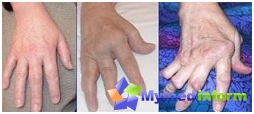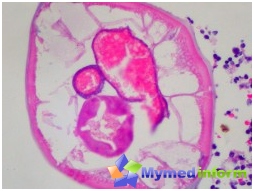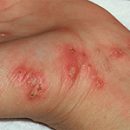What mother will agree during the illness of his baby on the fact that the antimicrobial drugs are intramuscularly, and not just give a medicine or tablet? Not every ... absolutely accurate. And why? The most prevailing with a huge advantage will say: «What I will be injured, damas do ... when it's so convenient - in the spoon I give the mixture». And moms do not think how serious the consequences of such rapid acts can be. Although why immediate antibiotics? There are a lot of other diseases, states and medicines that cause this problem. And not only in children ..
Dysbacteriosis. About him and it is worth talking in mind the multiple epidemics of various diseases, as well as in connection with the huge growth of the pharmaceutical industry.
What is «Microflora» and «Dysbacteriosis»?

No one of the readers our website is not a secret that in our body «Lives» A huge number of microorganisms, their over 490 species. But not all of them are capable and will cause various diseases. Therefore, there is a pathogenic and conditionally pathogenic microflora. In general, every person has its own «population», your microorganisms that support in turn the body itself. That is, this is a kind of symbiosis: «You - I, I - You».
In different departments of the digestive system are different «settlers». So, for example, in the mouth (by the way, «densely populated» The place of our body) and in the thick intestine the anaerobes (intestinal wand, enterobacteria, yeast-like mushrooms are dominated; A stomach in general «Poele», T.To. In hydrochloric acid, many do not survive.
What are they needed for? Food that we use can be very useful, but in the form in which it falls into the stomach, our body does not go. So you need somehow her «process» and «subtle». For this, you need the whole composition of microflora. And here the main role is played by bond microorganisms.
Bondic microorganisms are the main, permanent microflora. It begins to form with the first in the life of the baby feeding and stabilizes for 2 months.
Next, during life there is a gradual settlement of the intestine of a conditioned pathogenic microflora. Its need to end has not been proven. Some doctors believe that in the presence of them in the intestine, the risk of the overall incidence of intestinal infections is reduced, immunity increases. Others believe on the contrary, that it causes a greater incidence ... In any case, there are conditionally pathogenic microorganisms, there is always.
Conditional pathogenic microflora is secondary «settlers», which may be in the body for a long time, not causing any harm. But if B intestines There is a large number of bacteria of the same kind, or immunity is dramatically reduced, the disease manifests in severe form. In a healthy body, the growth of this microflora contains bond microorganisms.
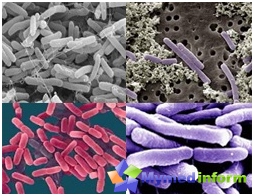
And the third, the most dangerous group of microorganisms is pathogenic, t.E. Path-making.
Pathogenic flora in the human body does not exist constantly. A, acting out of out, causes a disease or by destroying normal microflora, or very fast persistence (reproduction and settlement). Almost immediately or against the background of reduced immunity and oppressed protective forces of the body.
Thus, the first two groups exist in the intestines can exist. The emergence of representatives of the third group of microorganisms causes unbalanced, the imbalance of the entire microflora. Bonds die that strengthens the growth of pathogenic strains ... Clinical signs of this imbalance appear. This is called dysbacteriosis.
Factors affecting the composition of intestinal microflora
As it will be about violating the microflora itself in a previously healthy baby, consider cases of pathogenic microorganisms from the outside we will not.
So, the reasons for such a violation, microflora imbalances can be divided into external and internal.
External reasons:
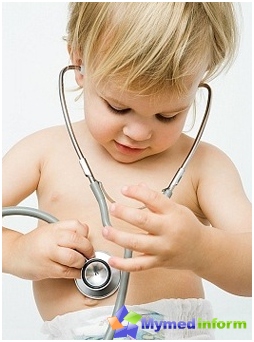
- Ecology, as well as related geographical and climatic conditions for people living (here you can attribute environmental pollution from plants and factories, radiation impacts, exhaust pollution and T.D.). Enumerating harm to date, you can infinite. Unfortunately;
- Next, the harmfulness is also played by the harmfulness, ranging from vibration and ending with various harmful production due to its action on the body as a whole;
- Sanitary-hygienic - these are all our living conditions combined. Starting from the same working conditions and ending with the entrances of our homes.
Internal reasons:
- To them, first of all, it is necessary to include various infectious diseases. Since we are talking about the dysbacteriosis of the intestine, then in the foreground of the intestinal disease - salmonellosis, klebseyelles, viral diarrhea and t.D. All because they are accompanied by inflammation of the mucous membrane of this or that department of the gastrointestinal tract. Even the catarrhal syndrome with ORVI will manifest itself in the intestine;
- Alimentary causes, t.E. caused by unbalanced nutrition, children are particularly often (incorrectly introduced lures in the first year of life, as well as the passion for various diet in teenage girls, and in young men - bodybuilding and bodybuilding);
- Stressful states play an important role. Here is more dependence of hormonal status;
- immunodeficiency;
- In children, an important role is played by allergic conditions, atopic dermatitis, diathesis. After all, rashes on the skin - only a small indicator of what is happening in the body. Very much remains inside, and food sensitization is especially important, t.E. Allergy to any food.
- congenital dysfunctions of the gastrointestinal tract and its enzymes (for example, Mal Absorption syndrome);
- Somatic diseases. And of course, there are diseases of the gastrointestinal tract. Such as Gastritis, Gastroduodenites, intestinal atonia and various paresis, colitis, liver and gallbladder diseases. There will also be various postoperative states (resection of the stomach, gallbladder);
- And the last group is the impact of various drugs. First of all, these are antimicrobial and narcotic drugs, as well as funds affecting the stomach motorcycle, on the secretion of enzymes, enveloping.
So, having understood with the main large groups of the causes of dysbacteriosis, you can try to recognize dysbacteriosis.
How to understand what you need help?
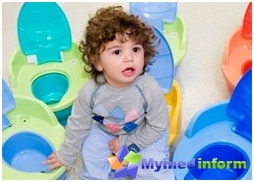
It is important to remember that young children have dysbacteriosis to distinguish from physiologically normally flowing processes quite difficult. Therefore, an important role is played «Predecessors». Suppose Mom knows that her baby recently got pneumonia at which antibiotics were used, but the prevention of dysbacteriosis in the form of the described drugs did not conduct. Of course, in this case, we will think about dysbacteriosis. The same applies to any above mentioned states in which it is possible to occur.
So, the easiest way is Koprology - Cala's study. Here, first of all, we look at how the food received is learned by the body. If there are many undigested muscle fibers, fatty acids, fiber, starch, it means that the organism is absorbed bad. And one of the reasons is a violation in the microflora and something that does not allow her «work». This is possible in dysbacteriosis when pathogenic microorganisms suppress the bonded flora. Also in the analysis, there is often a large number of leukocytes and intestinal epithelium cells that appear in it due to inflammation of the intestinal wall remaining without their microorganisms. And of course, the color and consistency of the carts themselves will be given to know about the violations in the body - the chair is liquid, abundant, frequent, with plenty of water, often light color. At the same time, the kid will constantly ask to drink, and in severe cases, an excacosis can develop - dehydration. The smallest kids will stop adding in weight, will even start losing weight. The skin becomes dry, its elasticity is lost.
Of course, in such cases, children need hospitalization and urgent state correction. We will talk about non-heavy embodiments of the intestinal dysbiosis after, for example, antibiotic reception.
Treatment of dysbacteriosis

The first and key point in the treatment of dysbacteriosis is Power Correction. So, I draw the attention of readers Our site for products that should be excluded from the diet to avoid irritation of the mucous membrane of the gastrointestinal tract and enhance the peristaltics. This is done to preserve water in the body. Namely, stop eating raw vegetables, fruits, with the exception of bananas and baked apples. From meat is allowed low-fat chicken, rabbit, cereals - rice, manna (if there is no allergy), millet. And all the cereals use in the witch. Good drink just rice decoction. From vegetables, we only leave potatoes. Dairy products exclude completely. The tea is also allowed by tea strong, sweet, water, compote from dried fruits (and only the compote itself without berries), decoction of chamomile, kisyl. Juices I carbonated drinks - categorically impossible.
Often for the treatment of dysbacteriosis in children apply bacteriophages. These are viruses of bacteria that selectively kill the cause of dysbiosis. But their use is possible only after the famous causative agent.
Probiotics. Today it is the most diverse and frequently used group Preparations for treatment Dysbacteriosis in children. The name speaks for itself - «for life» (antibiotics - «against life»). The principle of their action is laid in themselves - lactic acid bacteria «Get up to defense» intestines and suppress microorganisms that cause rotting processes.
Prebiotics are probiotics stimulants. Well, symbiotics are complex drugs that include both pre- and probiotics. Consider the most commonly used of them:
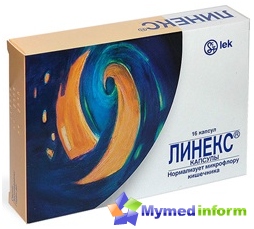
- Acipol has a multifactorial action, highly active, and also increases the immunological resistance of the body.
Apply: in children up to 6 months 5 doses per day, over 6 months 10-15 doses per day in 2-3 receptions 30-40 minutes before meals. The drug is dissolved in water room temperature at the rate of one teaspoon per dose of the drug.
Apply: in children under 2 years old 1 capsule 3 times a day; Over 2 years old 1-2 capsule 3 times a day. Early children, the capsule is opened and mixed with a small amount of liquid. Course 5-7 days.
Apply: in children up to the year half a day 2 times a day, in children from 1 to 3 years old 1 capsule or 1 bag 1-2 times a day, over 3 years old 2 capsules or 2 packets 1-2 times a day for 30 minutes before meals.
Apply: in children up to 6 months at 5-10 doses per day; from 6 months to 3 years - 1-15 doses per day; Older 3 years - 15-20 doses per day for 2-3 receptions 30 minutes before meals.
Apply: children over 3 years old 10-12 doses per day in 2-3 receptions 30 minutes before meals. To dissolve the preparation use boiled water at the rate of 1 dose of the preparation on 1 teaspo.
Apply: in children from 1 year to 3 years 1 powder 2-3 times a day, pills Chewable children 2-3 years old 1 tablet, from 3 years 2 tablets 2-3 times a day, regardless of meals. Course 5 days.
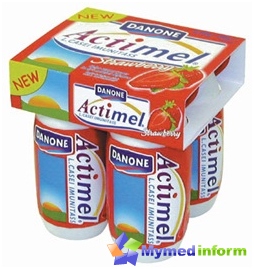
Apply: children over 2 years old 1-2 capsule 2 times a day, regardless of food intake. Course 10-14 days.
Currently, products containing bifido- and lactobacillia are widely used. The most widely used: bifox, bifilin, fermented milk bifidumbacterin, bioolat enriched, imunele, activist, actimel and t.D. Their only minus - the storage time of some products directly depend on the content of beneficial bacteria. That is, the more storage of them, the fewer bacteria contains them.



